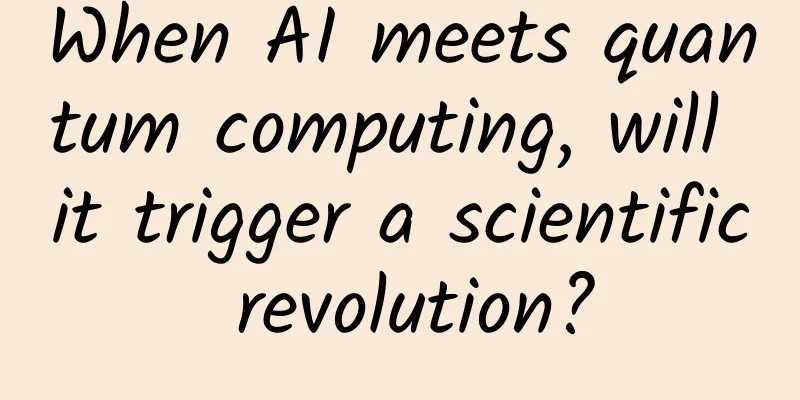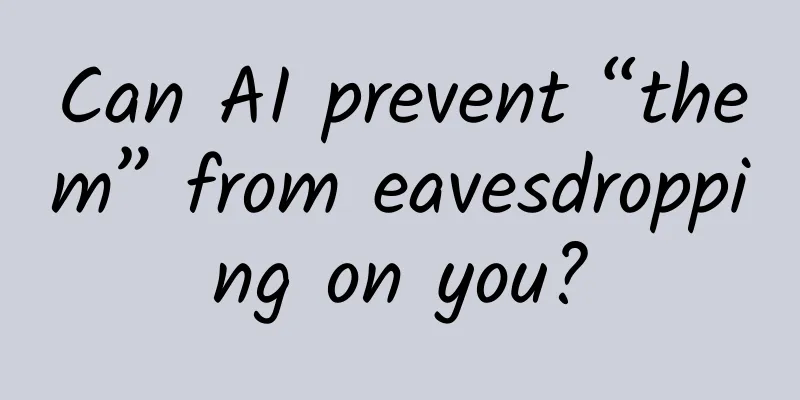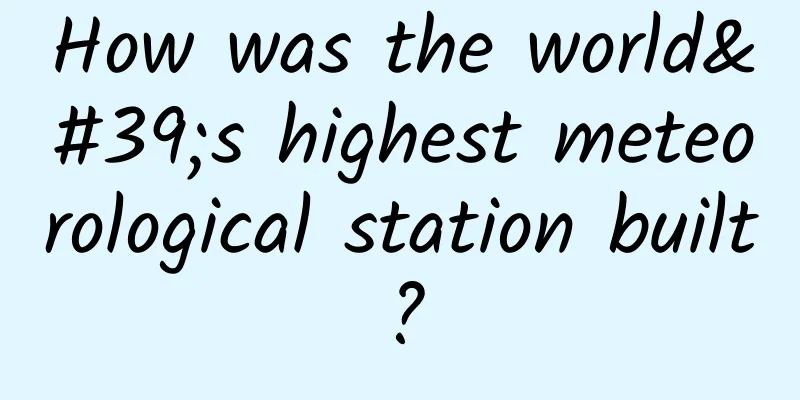When AI meets quantum computing, will it trigger a scientific revolution?

|
We can call it the Avengers of future computing. Combining two of the hottest terms in the tech world, machine learning and quantum computers, we have quantum machine learning . Just like the Avengers comic books and movies, which bring together a group of superheroes to form a dream team, this combination is likely to attract a lot of attention. But whether in the field of technology or fiction, it is crucial to develop a good plot. If quantum computers can be built on a large enough scale, they could potentially solve certain problems more efficiently than regular digital electronics by exploiting the unique properties of the subatomic world. For years, researchers have been exploring whether these problems involve machine learning, a form of artificial intelligence in which computers are used to find patterns in data and learn rules that can be used to reason in unfamiliar situations. Figure | Google is exploring whether quantum computers can help machine learning. (Source: Nature) Now, with the release of the much-anticipated AI system ChatGPT (which relies on machine learning to enable human-like conversations by inferring relationships between words in text), and the rapid growth in the size and power of quantum computers, both technologies are advancing rapidly. So, when the two are combined, can something useful emerge ? Interest is growing Many technology companies, including established players like Google and IBM as well as startups like Rigetti in Berkeley, California, and IonQ at the University of Maryland, College Park, are investigating the potential of quantum machine learning. Scientists in academia are also taking an interest . Scientists at CERN, Europe’s particle physics laboratory outside Geneva, Switzerland, have used machine learning to look for signs of certain subatomic particles in data produced by the Large Hadron Collider. They are among a group of academics experimenting with quantum machine learning. “ The idea is to use quantum computers to speed up or improve traditional machine learning models, ” said physicist Sofia Vallecorsa, head of the quantum computing and machine learning research group at CERN. One important unresolved question is whether quantum machine learning will have advantages over traditional machine learning in certain scenarios. Theory suggests that for certain computing tasks, such as simulating molecular structures or finding the prime factors of large integers, quantum computers will speed up calculations that could take longer than the age of the universe. But researchers still lack sufficient evidence to prove that this applies to machine learning. Others say that quantum machine learning may discover patterns that traditional computers don't - even if it's not faster. Researchers’ attitudes toward quantum machine learning oscillate between two extremes, says Maria Schuld, a physicist in Durban, South Africa, who works at Xanadu, a quantum computing company in Toronto, Canada. Although researchers are interested in the approach, they seem increasingly resigned to the fact that it has little prospect of being used in the short term. Some researchers are beginning to turn their focus to applying quantum machine learning algorithms to phenomena that are quantum in nature. Of all the proposed applications for quantum machine learning, this is “an area where the quantum advantage is pretty clear,” says Aram Harrow, a physicist at the Massachusetts Institute of Technology (MIT). Will quantum algorithms work? Over the past 20 years, quantum computing researchers have developed a plethora of quantum algorithms that could theoretically make machine learning more efficient. In a groundbreaking 2008 study, Harrow, along with MIT physicists Seth Lloyd and Avinatan Hassidim (now at Bar-Ilan University in Ramat Gan, Israel), invented a quantum algorithm that can solve large systems of linear equations, one of the core challenges of machine learning, much faster than classical computers. But in some cases, quantum algorithms haven’t lived up to their promise. One well-publicized example came in 2018, when computer scientist Ewin Tang found a way to beat a quantum machine-learning algorithm designed in 2016. The algorithm was designed to provide the types of recommendations that internet shopping companies and services like Netflix offer to customers based on their previous choices — and it did so much faster than any known classical algorithm. Tang, then an 18-year-old undergraduate, wrote an algorithm that was almost as fast, but that could run on a classical computer. Scott Aaronson, a quantum computing researcher at the University of Texas at Austin and Tang’s advisor, said the quantum recommendation algorithm is a rare example that appears to provide a significant speedup on a real problem, so her work “makes the goal of exponential quantum speedups in real machine learning problems even more out of reach than before.” Tang said she remains “quite skeptical” of any claims of big quantum speedups in machine learning . A potentially bigger problem is that classical data and quantum computing don’t always play well together. Roughly speaking, a typical quantum computing application has three main steps. First, the quantum computer is initialized, which means that its individual memory cells (called quantum bits, or qubits) are put into a collectively entangled quantum state. Next, the computer performs a series of operations, which are the quantum analogs of the classical bit logic operations. In the third step, the computer performs a readout operation, such as measuring the state of a single qubit that carries information about the result of a quantum operation, which might be an indication of whether an electron inside the machine is spinning clockwise or counterclockwise, for example. Like the "thinnest straw" The algorithm proposed by Harrow, Hassidim, Lloyd and others is expected to speed up the above "second step". But in many applications, the first and third steps can be extremely slow, offsetting these advantages. The initialization step requires loading "classical" data onto the quantum computer and converting it into a quantum state, which is generally an inefficient process. And because quantum physics is inherently probabilistic, the reading process is often random, so the quantum computer must repeat all three stages many times and average the results to get the final answer . Once quantized data is processed into its final quantum state, retrieving the answer can also take a long time, said Nathan Wiebe, a quantum computing researcher at the University of Washington in Seattle. “ We’re only able to suck information through the thinnest of straws, ” he said at a quantum machine learning workshop in October. “When you ask almost any researcher what applications quantum computers are good for, the answer is, ‘Probably not classical data,’ ” Schuld said. “So far, there’s no real reason to believe that classical data requires quantum effects.” Speed isn’t the only criterion for evaluating quantum algorithms , Vallecorsa and others say. There are also signs that quantum AI systems powered by machine learning might learn to recognize patterns in data that classical algorithms would miss. This may be because quantum entanglement creates correlations between qubits and, therefore, between data points, says Karl Jansen, a physicist at the DESY particle physics laboratory in Zeuthen, Germany. “We hope to be able to detect correlations in the data that are very difficult to detect with classical algorithms.” Figure | Quantum machine learning helps understand particle collisions But Aaronson disagrees. Quantum computers obey known laws of physics, so their operation and the results of quantum algorithms can be fully predicted by a regular computer given enough time. “So the only question that matters is whether quantum computers are faster than a perfect classical simulation ,” Aaronson says. Fundamental quantum change Another possibility is to sidestep the hurdle of converting classical data altogether, by using quantum machine learning algorithms on data that is already quantum in nature . Throughout the history of quantum physics, the measurement of quantum phenomena has been defined as taking a numerical readout using an instrument that lives in the macroscopic, classical world. But there is an emerging idea involving an emerging technology called quantum sensing, where the quantum properties of a system are measured by purely quantum instruments. Loading these quantum states directly onto the qubits of a quantum computer, quantum machine learning can then be used to recognize patterns without any connection to a classical system. This could have advantages over systems that collect quantum measurements as classical data points when it comes to machine learning, says Hsin-Yuan Huang, a physicist at MIT and a researcher at Google. “Our world is quantum mechanical in nature. If you want a quantum machine that can learn, it could be much more powerful.” Huang and his collaborators conducted a proof-of-principle experiment on a Sycamore quantum computer at Google. They used some of the qubits to simulate the behavior of an abstract material. Another part of the processor then took the information from those qubits and analyzed it using quantum machine learning. The researchers found that this technique was much faster than classical measurements and data analysis. Is it a superconductor? Huang said that collecting and analyzing data entirely in the quantum world allows physicists to address questions that can only be answered indirectly through classical measurement methods. For example, whether a particular material is in a special quantum state that makes it a superconductor (able to conduct electricity with almost zero resistance). Classical experiments require physicists to prove superconductivity indirectly, such as testing the material's response to a magnetic field. Particle physicists are also investigating the use of quantum sensing to process data from future particle colliders, such as the LUXE experiment at DESY, which smashes electrons and photons together, Jensen said. Although this idea is still at least a decade away, he added. Astronomical observatories far from each other might also use quantum sensors to collect data and transmit them via a future “quantum internet” to a central laboratory for processing by a quantum computer. The hope is that this would enable images to be captured with unprecedented clarity. If these types of quantum sensing applications prove successful, quantum machine learning may play a role in combining measurements from these experiments and analyzing the resulting quantum data. Ultimately, whether quantum computers offer an advantage for machine learning will be determined by experiment rather than mathematical proof. “ We can’t expect everything to be proven the way we do in theoretical computer science ,” Harrow says. “I certainly think quantum machine learning is still worth pursuing,” Aaronson said, regardless of whether it ultimately becomes more efficient. Schuld agreed. “We need to pursue it without the constraints of demonstrating speed-up, at least for now.” Original link: https://www.nature.com/articles/d41586-023-04007-0 Original author: Davide Castelvecchi |
<<: "Harbin, you make me feel strange..." What kind of city is Harbin?
>>: Who says wild boars can’t eat fine bran? They don’t really want it!
Recommend
Are brands like Apple and Zhong Xuegao no longer attractive?
We have all heard the story of eating steamed bun...
Growth Hacking in Action: A complete case study explains the core operation methods in detail!
The concept of growth hacking has been very popul...
How to acquire more users at low cost?
When an operator wants to promote a product, he s...
User growth methodology, a must-read for marketers!
The topic of growth has been mentioned repeatedly...
Lige practical internal training virtual project third phase
Lige practical internal training virtual project ...
Google's ambition: Android 5.0 aims to enter the enterprise market
Apple has dominated the enterprise mobile market ...
How scary are these cute animals behind the scenes?
One minute with the doctor, the postures are cons...
What are the functions of the Qingyuan Education and Training Institution mini program? How much does it cost to develop a small program for educational institution management?
We are actively pursuing our careers to the next ...
Android phone RAM can no longer be rolled up, good quality and low price are the best
As the 2022 Android flagships debut one after ano...
Smart home appliances become a dark area of security issues. Amazon Echo hacking once again rings the alarm bell for the industry
Amazon has slammed the brakes on the global smart...
Precautions for fresh Cordyceps sinensis
May and June every year are the fresh Cordyceps s...
How to monetize short videos in the medical and health field?
In the past few months, we have participated in t...
Tencent's territory has already reached Gabe Newell's home. The rise of TGP may herald the end of the STEAM era
As the world's largest gaming platform, Steam...
How can a small watch be so reliable? Experience of the new Sugar Cat Friend Edition children's phone watch
In recent years, wearable electronic devices have...
The latest guide to APP listing in 2021
After the APP is developed, the final operation i...









